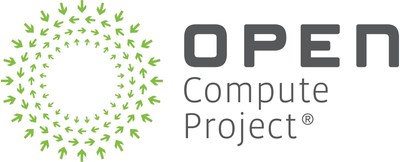
Source: cision | Published on: Tuesday, 05 August 2025
Allows Performance Tuning Designs of AI Clusters to Specialized Workloads
TAIPEI, Aug. 5, 2025 -- Today, the Open Compute Project Foundation (OCP), the nonprofit organization bringing hyperscale innovations to all, announces it has taken important steps in enabling silicon diversity for high-performance AI and HPC Clusters with the release of a new Universal D2D Transaction and Link-Layer specification that now also covers UCIe. This universal link layer will be an important part of the execution stack in delivering an economically viable and dynamic, reconfigurable AI Cluster capable of achieving world-leading performance in HPC and AI workloads. The link layer uniquely defines profiles that allow customization of the mapping from upper-level transaction layer services to the underlying PHY via link layer services, allowing choice of PHY without affecting other layers.

"The OCP recognized several years ago that innovation in silicon needed to be amplified, just as the constraints of larger silicon dies were beginning to impede progress. Through its Open Chiplet Economy Project, the OCP has established a strong community to deliver on the new standardizations, tools and best practices around technical and business workflows that are required for a truly open economy, where vendors sell chiplets embodying their IP to integrators that then build specialized System in Packages (SiPs)," said Cliff Grossner Ph.D., Chief Innovation Officer at OCP.
The Universal link layer specification uniquely combines bindings to several physical layer standards, with a low-latency low-overhead packetization of a wide range of protocols between chiplets. The overall layered architecture maps a set of design IP protocols on a chiplet interface using transaction and linklayer packet formats to a particular physical layer interface.
"Ventana has been at the forefront of the chiplet revolution, driving adoption of open, scalable solutions across the industry. Ventana is proud to continue its contributions within the OCP Community, enabling high-performance systems across Data Center, AI, and Automotive markets. What makes this specification unique is its efficiency and its ability to work with existing protocols and fabrics. This means chiplet-based designs can achieve near-monolithic performance without costly protocol bridges or complex conversions, accelerating innovation while keeping integration simple and open," said Balaji Baktha, Founder and CEO, at Ventana Micro Systems.
The development of the OCP Universal Link Layer specification is centered on silicon die disaggregation, maintaining simplicity to serve as many markets as possible with key features as follows: (1) extensibility to define interface profiles within the OCP community that allow native bus protocols to be packetized and transported, enabling chiplet interoperability; (2) portability across different die implementation methodologies and process nodes; (3) able to scale with support for multiple PHY slices and different data rates.
"We are at an inflection point where chiplet vendors have a fairly complete set of standards and tools available to build chiplet product sets. The market leaders developing chiplets are still playing a very important role filling gaps that they identify in current standards, and we expect to see these additional learnings materialize as updates to existing standards as the Open Chiplet Economy matures," said Anu Ramamurthy and Jawad Nasrullah, OCP Open Chiplet Economy Project leads.
To further the OCP vision for an Open Chiplet Economy, in October 2024, the OCP Chiplet Marketplace went live making available a catalog of standalone chiplets. This one stop site for SiP designers and builders to find the latest available standalone chiplets, design and manufacturing services, chiplet-aware EDA tools, and reference material needed to successfully build chiplet-based products.
"The semiconductor supply chain requires a robust multi-vendor ecosystem to serve not only the AI/HPC market, but other market verticals such as Automotive, Enterprise Data Processing, Communications Infrastructure, Medical, Defense, Aerospace and Industrial. Coming together as part of an open community to share learning and knowledge is critical for building common tools, standards and workflows so as to accelerate the pace of innovation." -Dan Nishball, Director of Research, SemiAnalysis
About the Open Compute Project Foundation
The Open Compute Project (OCP) brings at-scale innovations and hyperscaler best practices to all, spanning technology domains from the data center to the edge, and the technology stack from silicon, to systems, to site facilities and services. The international OCP Community is made up of organizations and people from hyperscale and tier-2 cloud data center operators, communications providers, colocation providers, diverse enterprises, and technology vendors. With the tenets of openness, impact, efficiency, scale and sustainability, the OCP engages and educates thousands of engineers every year. Across many projects and initiatives, the OCP Foundation and Community are meeting the market today and shaping the future.
Learn more at: www.opencompute.org.
Media Contact
Dirk Van Slyke
Open Compute Project Foundation
Chief Marketing Officer
dirkv@opencompute.org
Mobile: +1 303-999-7398
Logo - https://mma.prnewswire.com/media/1018821/OCP_Logo.jpg
